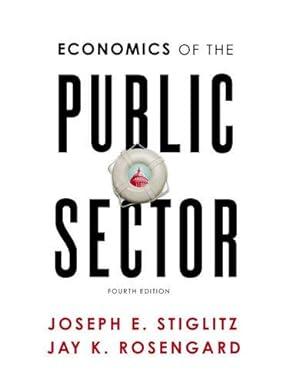a. Draw the budget constraint of an individual facing a negative income tax with a constant marginal
Question:
a. Draw the budget constraint of an individual facing a negative income tax with a constant marginal tax rate of, say, 30 percent, assuming the individual receives $1000 if he or she does not work (and has no other source of income). Assume that the basic "grant" is increased to $2000 and the marginal tax rate is increased to 45 percent. Draw the new budget constraint. Explain why (1) very poor individuals are likely to work less under the second regime, and (2) middle- and upper income individuals may work more or less.
If the government were particularly concerned about the lack of work incentives of the poor, but still wanted to provide a high level of basic support, it could have a marginal tax rate of, say, 30 percent, up to $30,000 of income, and then impose, say, a tax rate of 55 percent for higher incomes. Compare work eff ort in these two regimes. Who is likely to work harder? Less hard? Why might you be more concerned with the reduced work eff ort of upper-income individuals compared to the increased work eff ort of lower-income individuals?
b. The size of the EITC depends on family size. Explain why it might make sense for the increase in benefits with a third child to be less than the increase in benefits from a second child. (Families with no children get no benefits.) What incentives might such a structure have for families breaking up?
c. Explain why, even taking into account Social Security taxes, two poor people can be made better off if they hire each other to look after their children. Would it pay them to hire each other to do nothing?
Step by Step Answer:

Economics Of The Public Sector
ISBN: 9780393925227
4th Edition
Authors: Joseph E. Stiglitz, Jay K. Rosengard





